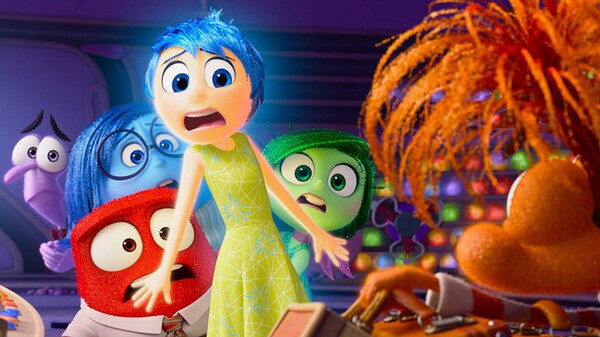Hatred, vengeance, reparation and forgiveness in the film The Painted Veil
Directed by John Curran and based on the book by the same name by W.
Somerset Maugham
Lift not the painted veil which those who live Call Life (Percy Bysshe
Shelley)
The opening scene of the film “The Painted Veil” depicts a journey into
vengeance. Dr. Walter Fane, a bacteriologist from England, forces his wife
Kitty to embark on a journey of hell through heat, humidity and misery to a
remote village in the interior of China to punish her for her infidelity.
The two-week overland journey takes them to a far-off place called
Mei-tan-fu where there is an outbreak of cholera. Travelling overland is
more arduous and uncomfortable for Kitty (not least for him too) than
travelling down the river. The sultry and suffocating weather starkly
contrasts with Edward’s cold and controlled emotions.
Two years earlier, Walter was so smitten by Kitty, a vivacious socialite of
high society that despite being shy and awkward in character he had made an
uninviting proposal to her. After discovering Kitty’s clandestine affair,
Walter changes and shows unimaginable cruelty to his wife. The intensity of
Walter’s hatred and vengeance (played by a superb Edward Norton) is shown
by a throbbing vein on his forehead. On discovering Kitty’s infidelity,
Walter threatens to file a petition for divorce. Walter gives Kitty two
horrifying alternatives (particularly for a British woman living in the
1920s): she could obtain a divorce on grounds of adultery and be held up to
public scorn or leave Shanghai with her husband to a remote and dangerous
place with a sweeping cholera epidemic. Naomi Watts plays beautifully the
part of Kitty, who is quite selfish and spoilt. She does not love Walter,
has never loved him, never been in love with him or even considered him as
a good catch. Though se would accept a divorce, she does not like the idea
of Edward exposing her to a scandal. At the same time, she is loathed to
the idea of continuing her marriage in an isolated place where she could
risk dying of cholera. She runs to her lover for she mistakenly thinks he
truly loves her. Where she expect to find true happiness –something which
she has never felt with Walter-, she finds just a “painted veil”. But when
her lover rejects her, she has no choice but to follow her husband obtorto collo wherever he wants to go. Walter is so consumed by
vengeance he barely speaks to Kitty and long silences fall upon them both.
Kitty quickly falls into a sea of solitude and desperation.
How is it possible for love to emerge from a union like this? This is a
marriage based on Walter’s initial infatuation and Kitty’s desire to be
freed from her overbearing mother eager to dispose of her daughter in a
society where women are not offered many other opportunities for social
dignity. Sooner or later, a woman had to pass from paternal protection to
that of a husband’s. It was better sooner than later for Kitty, who was now
approaching the years of danger when she would be past her prime and where
a becoming girl of high society could start to wither and fade and be
destined to a life of spinsterhood with her parents. In short, that was not
a solid base for a long lasting relationship. Infidelity, contempt, hatred
and vengeance ensue.
Walter’s suffering is plainly manifest, the affront of adultery causes him
so much anguish and torment that the extent of the cruelty he exercises
over his wife cannot be explained in another way. Why would he have such a
detached manner and calculate his words if it were not to frighten his
wife? On arrival at the decimated village he pretends to reassure Kitty by
saying that she should not worry, that after all dying of cholera is a
rapid affair, albeit painful but after a few hours it’s all over. He then
turns and closes the door behind him, leaving his wife alone on the breach
of despair. Walter’s silence, coldness and indifference are part of his
vengeance but eventually they have the better of him when he too falls into
a tunnel of unhappiness and cynicism. It is all too comprehensible: he who
is betrayed despises and seeks revenge through forced indifference even in
daily petty actions. It brings to mind Terence’s words humani nihil a me alienum puto (Nothing human is alien to me).
Walter feels deeply offended and humiliated; he feels hatred and seeks
revenge. But how can revenge perpetrated in the illusion give some relief?
If anything, it acts like a boomerang, it backfires and gives sufferance to
those who seek revenge and this is exactly what happens to Walter. What
hope can there be of healing those deeply hurt wounds?
Yet, something extraordinary happens. Kitty, tired of being constantly
unhappy and determined not to finish her life consumed by hatred and
resentment, reaches out to her hostile and rancorous husband ( Perhaps I just want us to be a little less unhappy). When she sees
her husband at work she begins to see him differently. She no longer sees a
clumsy suitor or nerd bacteriologist surrounded by test tubes or a sadistic
man who has forced her on an unnecessary journey. Moreover, she begins to
see the compassion Walter has for his patients.
It is a story of a tortuous journey, of atonement and of vengeance. When
Kitty was initially confronted with the squalor, misery and disease in that
secluded area of China she felt the confinement even more. She lamented the
life she had in London and its frivolities. Through her attempt to get out
of this overwhelming unhappiness she feels the need to draw away from
herself and put aside her selfishness. Maybe she wants to give true meaning
to her days, which swings like a pendulum backward and forward between pain
and boredom. She feels the need to fill her days by doing something useful
and begins by helping in an orphanage. Gradually, Kitty though fatuous and
used to living in luxury, becomes dedicated to the existence of others as
well. Kitty’s transformation is not so apparent, she does not seek to be
virtuous or morally upright. In this way, the story is not made trite or
banal nor something absolutist or difficult to believe. Nor can we attach
this cliché to Walter. It is Kitty, while maintaining a dignified and
graceful manner throughout, who constantly tries to change and puts her
piano skills and her love for music to good use (the piano soundtrack by
Alexandre Desplat is magnificent). In turn, Walter sees Kitty with
different eyes and from that moment they begin to love each other. The
empathic perspective allows Walter to see a woman with a loving heart and
not the spoilt and shallow girl he once fell in love with.
How can two people so full of hatred and despite fall in love? This can
only happen when deep wounds are healed, wrongs are amended from the past,
and when there is a reciprocal desire to bring new life into a
relationship. In other words: forgiveness. Forgiveness saves Walter and
Kitty from the compulsion to ruminate over the past wrong doings, from
plummeting into isolation, from continual recriminations in the hope of
finding some kind of justice. When there is a reciprocal offering and
receiving of forgiveness, freedom widens and permits people to live again.
(*) Prof. Barbara Barcaccia is adjunct professor of Techniques of Clinical
Interviewing-University of L’Aquila, professor of Cognitive Psychotherapy,
post graduate specialization School in Neuropsychology-Sapienza University
of Rome, Accredited Trainer in cognitive-behavioural psychotherapy, post
graduate Specialization School APC-SPC. She is the co-editor with Francesco
Mancini of “Teoria e clinica del perdono” (Raffaello Cortina Editore),
finalist of the First National Award for Scientific Divulgation (AIL),
sponsored by the National Research Council (CNR).














